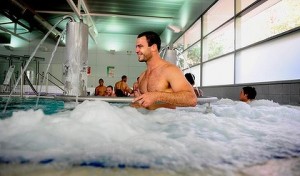 Here at Inspire Fitness, we are passionate about making sure our clients benefit from training based on the most up-to-date research in exercise and sport science, and is specific to their individual fitness goals and needs. So it’s only natural that our blog posts often focus on how best to train your body to maximise the benefits to your health, fitness, and longevity.
Here at Inspire Fitness, we are passionate about making sure our clients benefit from training based on the most up-to-date research in exercise and sport science, and is specific to their individual fitness goals and needs. So it’s only natural that our blog posts often focus on how best to train your body to maximise the benefits to your health, fitness, and longevity.
It might surprise you, then, to discover that one of the most critical components of effective training happens outside of training time itself. Giving your body adequate recovery from physical and mental efforts is the key that unlocks the most beneficial gains to your health.
Supercharge your recovery
The importance of sufficient recovery to human performance is highlighted in the preparations of every Olympian. For example, the Australian Institute of Sport established a dedicated recovery centre at the London 2012 Olympics complete with hot and cold baths, massage services, psychological counselling, and more! There are also recovery physiologists and sports dietitians on hand to provide support to the athletes with respect to their sleeping habits and nutrition. These recovery strategies have been implemented to ensure that our Australian Olympians are able to:
- Deal with the physical demands of elite-level sport;
- Avoid and reduce injury and illness;
- Cope with the emotional and mental stress of the unique Olympic Games environment; and
- Achieve peak performance when it matters most.
For everyday warriors, the message is very much the same. To reap the full rewards for your hard work in training, you must support your training with adequate recovery. And that doesn’t mean you have to start installing hot and cold contrast baths into your home! Our recommendation is to focus on three key components of your recovery:
1. Movement maintenance (e.g., myofascial release, stretching)
During your warm ups and cool downs, take 5-10 minutes to perform self-massage techniques with the aid of massage balls and/or foam rollers. We use self-massage techniques extensively with clients, to release myofascial tension in key areas of the body that often accumulate tightness – the neck and shoulders, the hips and upper leg, and the feet. When you’re next in the gym, feel free to ask one of our friendly personal trainers what self-massage exercises would be most appropriate for you.
2. Sleep
Getting plenty of restful sleep is a surefire way to boost the health benefits of your training. During sleep, your body engages in specific biological processes that allow your body to adapt to your training, increasing your fitness to better prepare your body for future physical activity. We have written extensively on the health benefits of sleep and how sleep affects weight loss; restful sleep is also critical for your recovery from exercise.
3. Diet
There’s an old saying that “you can’t out-train a bad diet”, and it’s true. A poor diet is one of the most common factors that blunts the beneficial responses of the body to regular exercise. Not sure what constitutes a “good diet”? A good place to start is by understanding the Dietary Guidelines for Australians (click to download the PDF).
Join us again soon for the final instalment in this 5-part series on the training habits of our inspiring Olympic athletes!
